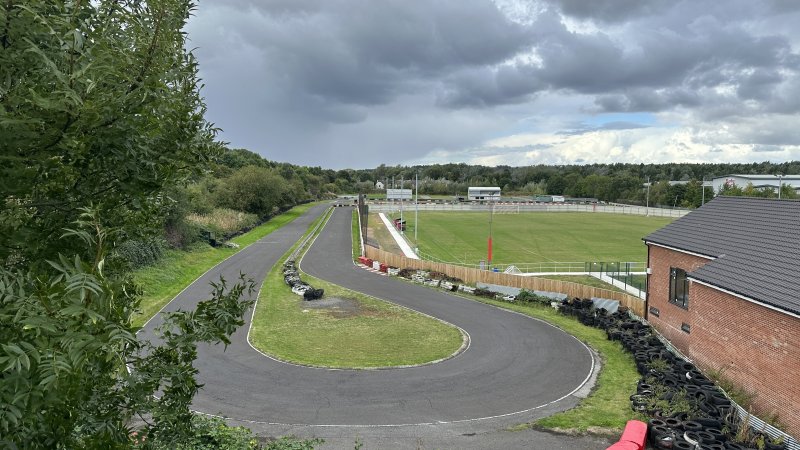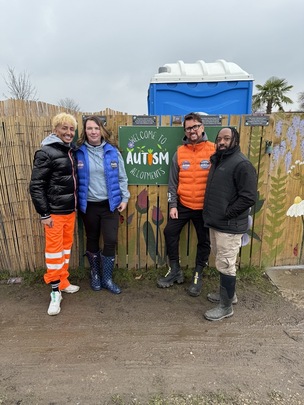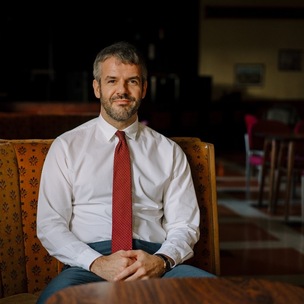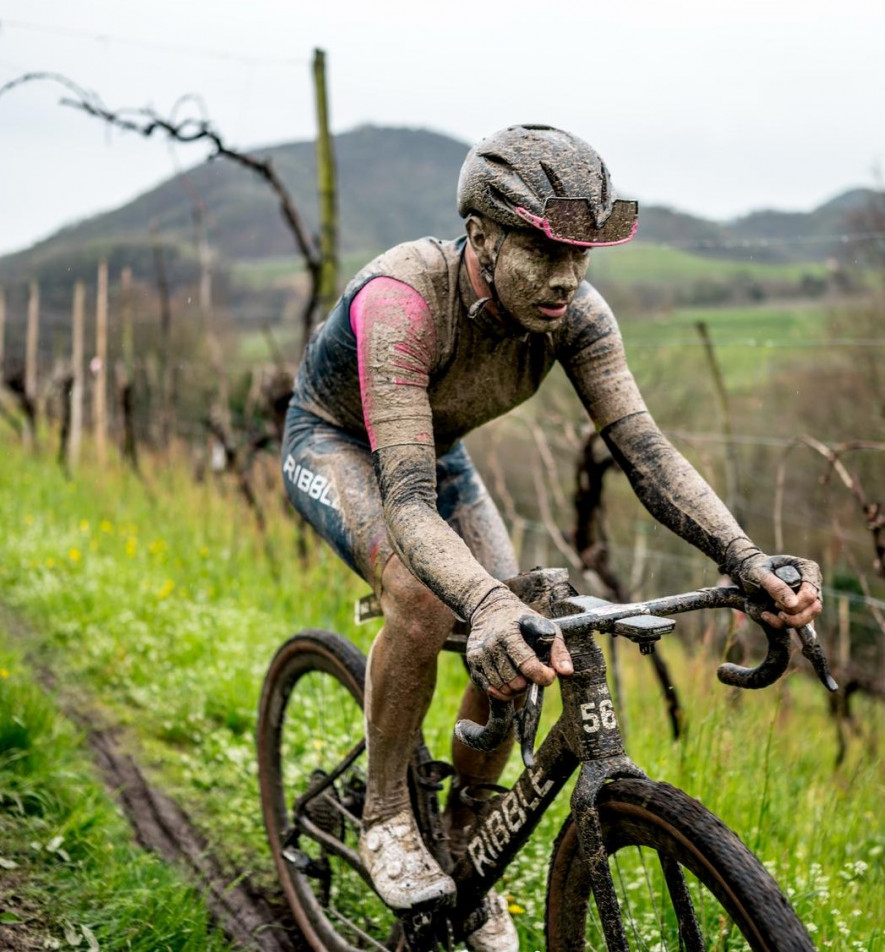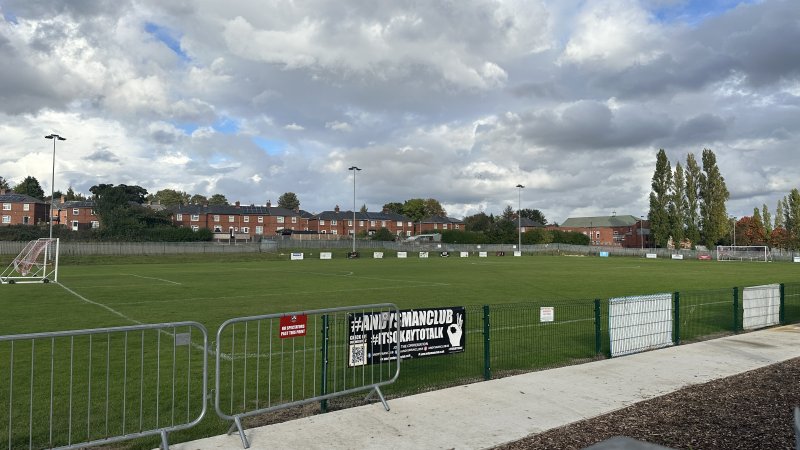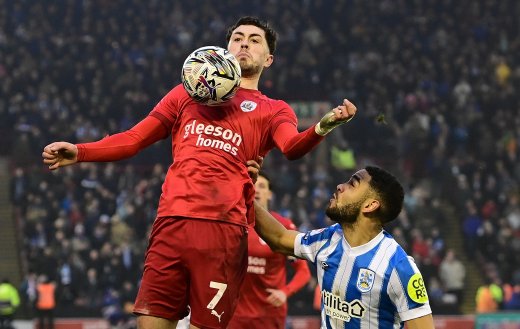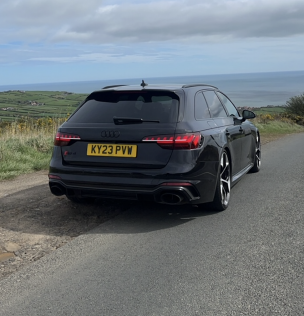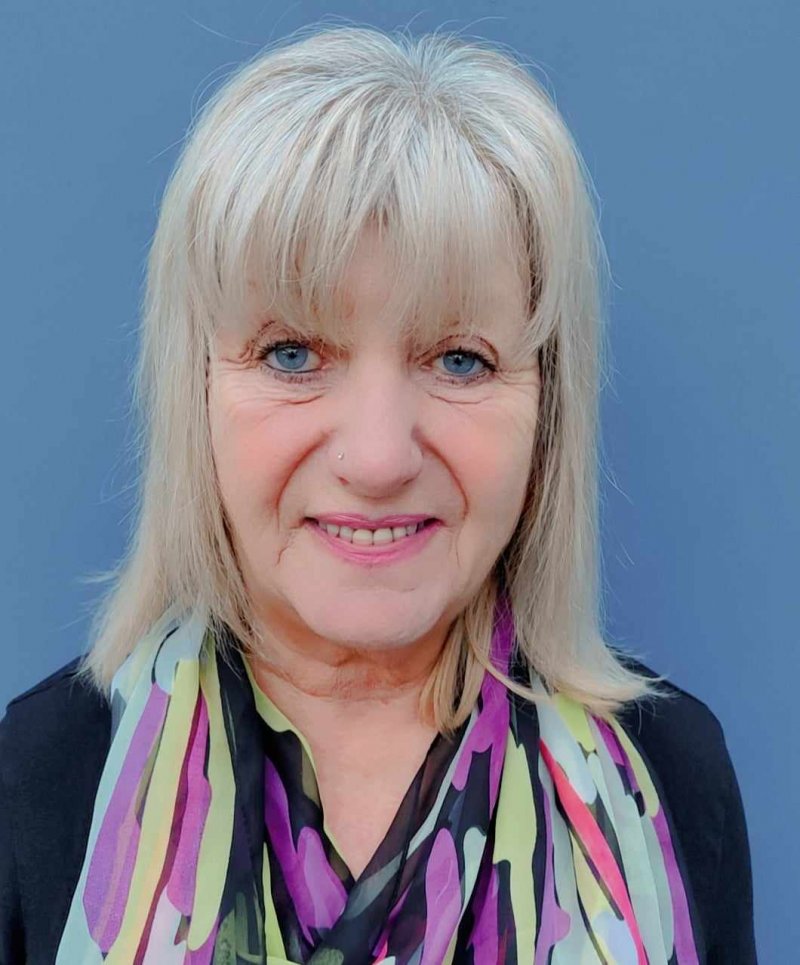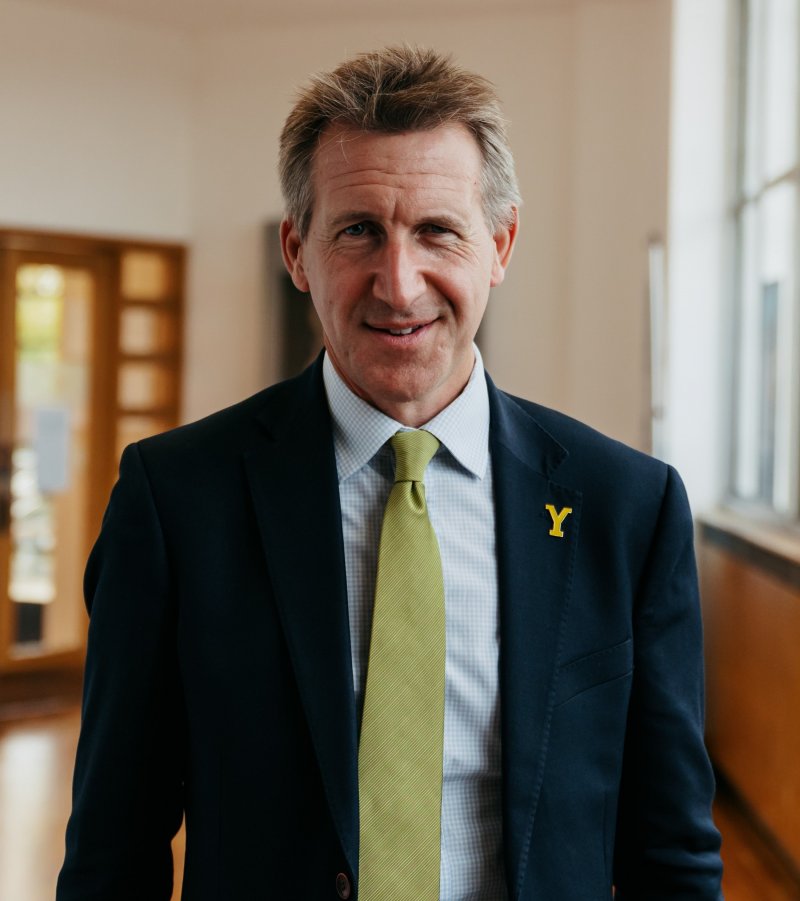Even the name of the race appealed to me. About 30 miles north of Venice, racing 183km of gravel trails around the Prosecco hills, starting and finishing around a lake in Lago Di Bandie.
I flew into Marco Polo airport two days before the event, collected my hire car, and went straight to the team house.

The mechanics drove straight from last weekend’s race in Turnhout (Belgium) and the rest of the riders flew in from different airports.
The atmosphere in the house was relaxed leading up to the race, with everyone anticipating the race ahead.
Race day arrived with rain, which made everything harder physically and mentally.
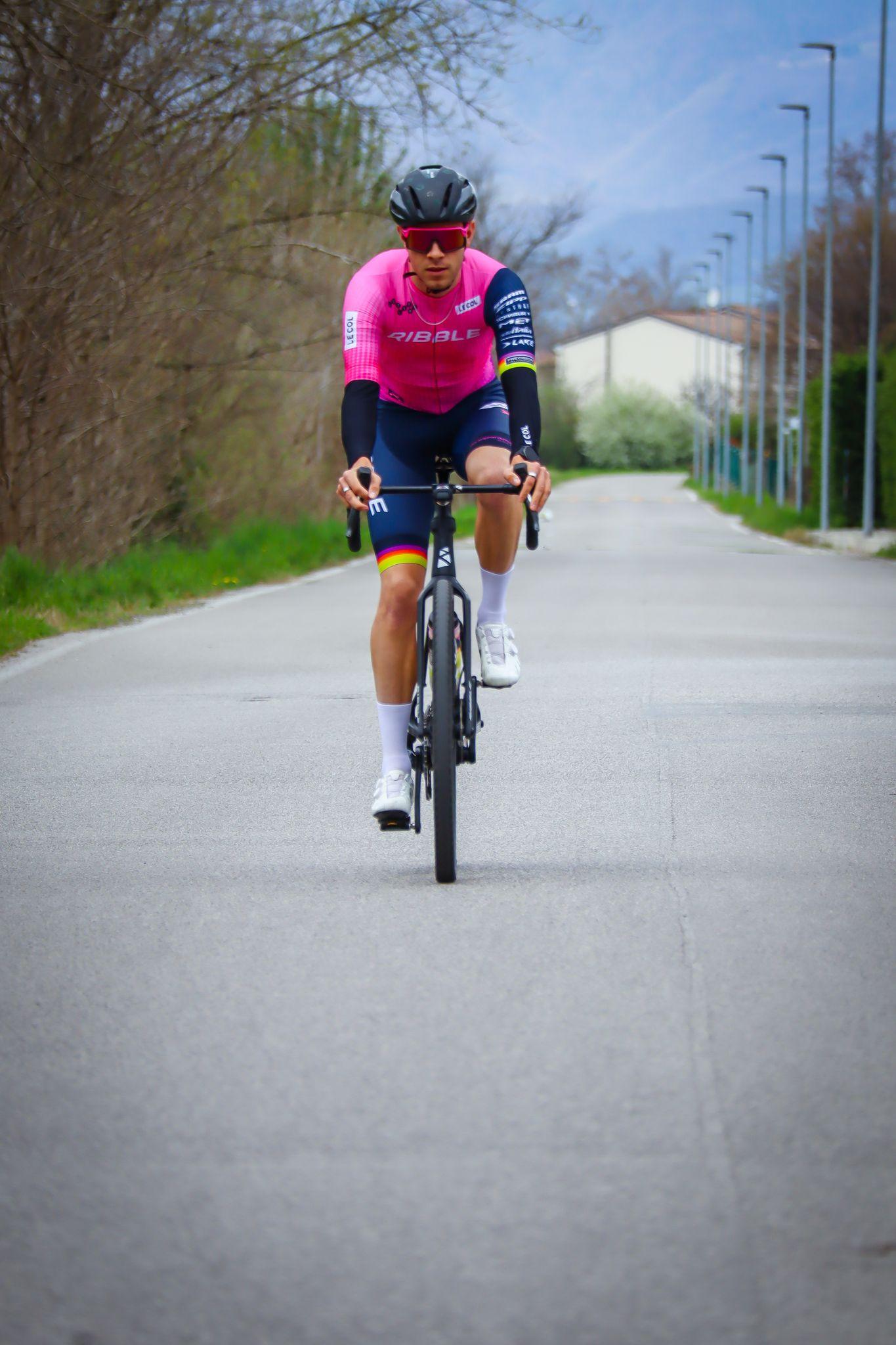
It slowed the speed of the race, increasing the overall time on what was already a long distance.
This was also the longest race I’d ever done. However, the rain didn’t scare me—it was the same for everyone.
I knew my skills on the descents were as good as anyone’s, and the rain was something others would mentally struggle with even before the race began, which worked to my advantage.
I spoke to my coach (Phil) the night before the race, and we discussed a strategy.
Since it was my longest race and I was still relatively new to gravel racing, we focused on a performance goal rather than a result goal.
We agreed that racing to win from the start wasn’t ideal and might cost me later.
Instead, I was to conserve energy, ride my own race, and look after my bike on the descents to avoid mechanicals or punctures.
We hoped a good result would follow this strategy.
I also had a call with the nutritionist/sport scientist at Precision Hydration, the team’s nutrition sponsor, before flying to Italy. They set up a personal fueling plan to avoid the issues I’d faced in Belgium.
On race day, the start was at 8 am. The five of us racing ate a heavy carb breakfast at 5am, which wasn’t pretty.
We arrived at the race an hour hour before the start, did a quick toilet trip, made some final tweaks to the tire pressures, and put on extra clothes to stay dry.
Before we knew it, we were at the start line with no time for a warm-up.
The first 25km were flat and on wide tracks, giving me time to move up to the front to get in a good position for a small tunnel at 30km, which we’d scouted the day before.
I knew this would be a key point where the race would split. I went through it in fifth, and as I’d expected, the race split, and a group of seven got away, which I was in. I could hardly believe I was racing alongside people like Lachlan Morton and Thomas De Gendt — riders I’ve watched on TV.
By 60km, my group had over a two-minute lead on the chasing group of 15. I was in the best position to race for the win.
But then my group took a wrong turn, allowing the 15 behind us to catch up when we got back on the right path.
All the hard work from the first two hours was undone, which was frustrating.
At 80km, a mechanical with my rear brake meant my wheel wouldn’t spin freely, making the next 50km very tough.
I didn’t know how I’d finish the race with the extra effort I was putting out just to keep up with the front group.
The rain had made some sections extremely muddy, forcing me to run up some climbs.
At 130km, my chain fell off five times due to the mud. Within two minutes, my race was over.
Riders were passing me, and all my efforts in the last five hours felt pointless.
Covered head to toe in thick mud, I couldn’t even drink from my bottle without getting dirt in my mouth.
I had only packed enough nutrition for five hours, and missing a bottle at the first feed zone meant I went without water for almost two hours. The demanding course was taking a toll on me, and mentally, I was in a dark place.
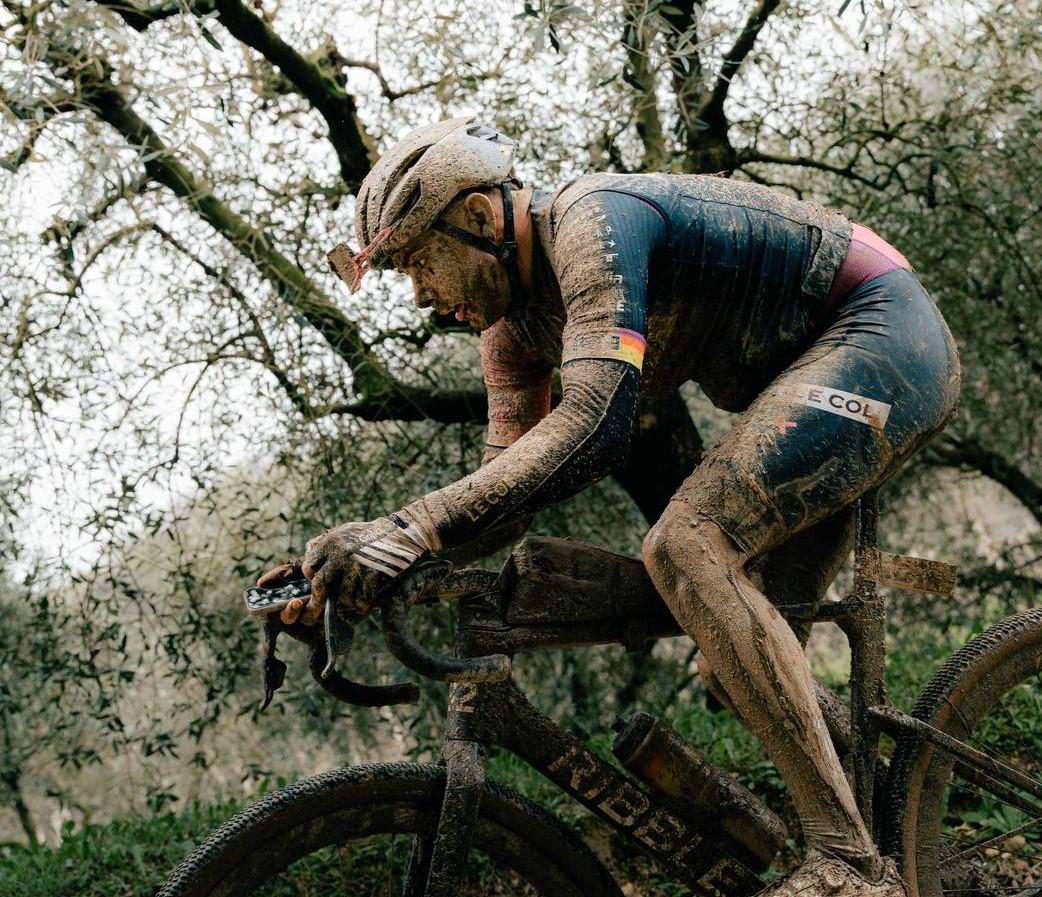
My bike wasn’t cooperating, which added to my exhaustion. I called the mechanics waiting at the next feed zone and explained what had happened, ensuring they were ready with tools.
After that, I faceTimed my mum—she could barely see me through all the mud. It was one of the hardest moments I’ve had in cycling.
Every part of me wanted to quit, but with a bit of encouragement, I focused on just finishing.
The rest was a blur. I made it to the mechanics, let them work on my bike for a few minutes, and rode the last 30km to the finish by myself, feeling deflated.
Getting to the finish line was bittersweet. I was proud to finish but still thought about what could have been.
Six hours 40 minutes, 183km.
Afterward, it was a quick turnaround—washing kit, mechanics rebuilding bikes at the team HQ, and packing my bags again as I’m now on a flight to San Francisco for the next race in Monterey, California (Sea Otter).



